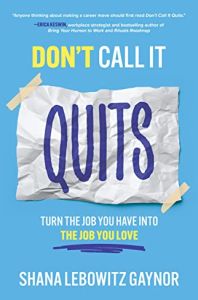When your job stinks, you should just find a better one, right? As many unhappy employees know, life doesn’t always work this way. But staying in a job you dislike doesn’t mean you’re stuck and doomed to misery. Relying on advice from experts, journalist Shana Lebowitz Gaynor offers real-life examples, practical tips and guided exercises to help you start reshaping your role. Although this book is written for professionals at any career stage, it will offer the most insight to a younger audience – or anyone with high expectations of a fulfilling career.
Staying in a job you dislike is an exercise of agency – you aren’t trapped.
Even though you have an objectively decent job that pays well enough, for whatever reason, you wish you could quit. The idea of sticking it out is unsatisfying or even misery-inducing, but it doesn’t make sense to leave. Perhaps you feel stuck. But even when you dislike your job, you don’t have to be miserable, and you are certainly not stuck.
There are many good reasons to stay in a job that doesn’t thrill you. Perhaps it allows you to pay off debt, enables a lifestyle you enjoy, builds useful skills, leaves room for caregiving responsibilities or simply provides stability. Moreover, some people are, by disposition, more willing than others to quit a stable job. Even if you have the degree of risk tolerance required to pursue a new role, you may not always have the energy or desire to do so – and that’s OK.
The way forward starts by recognizing that you are the one in control. Staying where you are, for any logical reason, is itself a real exercise of agency. Your current role is not a prison. It’s an important ingredient in the life you want. Choosing...




















Comment on this summary